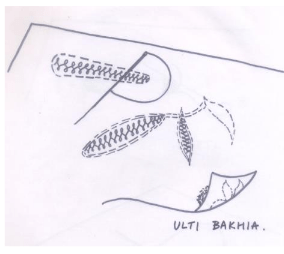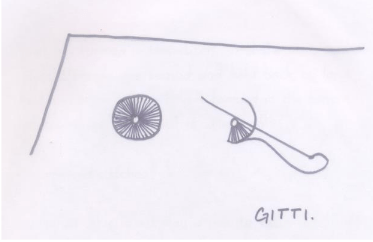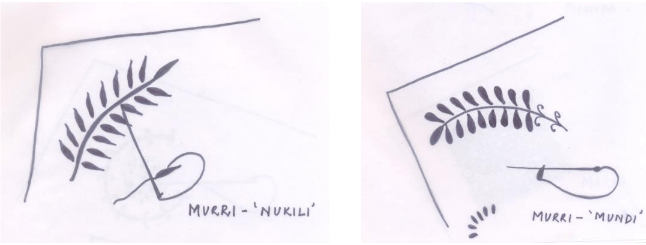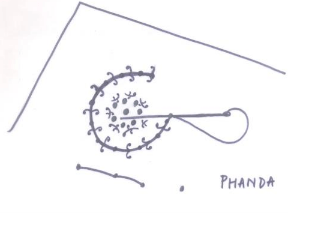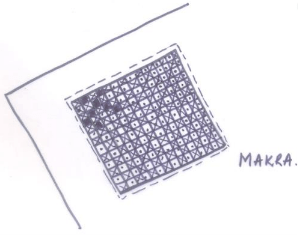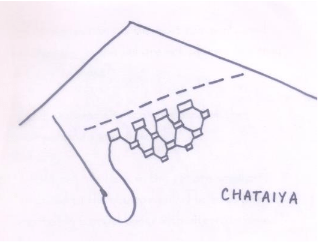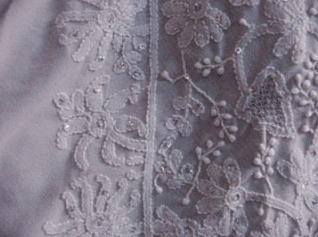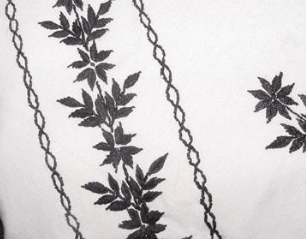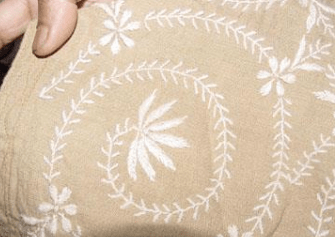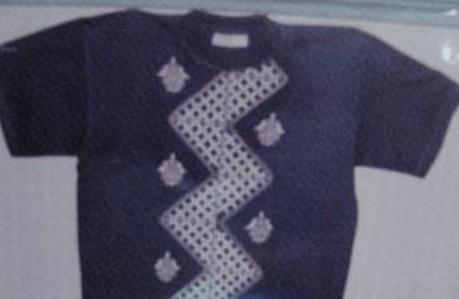Chikankari dress , a craft more than 200 years old, is the delicate art of embroidery traditionally practiced in Lucknow. It was traditionally done on cotton fabric, with the design marked with wooden blocks in removable colors.
The embroidery is mainly done on white fabric using white thread. Today colors are also used, as are also different types of fabric. However the traditional stitching techniques continue to be used.
History of Chikankari Dress
Chikan embroidery is supposed to have come from Persia in the seventeenth century with Noor-Jahan, the queen of Emperor Jahangir. The word chikan comes from the Persian word chikaan meaning drapery.
Some sources attribute the origins of the craft to East Bengal where the word‘chikan’ meant fine. Chikan was first referred to in the third century B.C. in the records of Megasthanese, a Greek traveler who mentioned the use of flowered muslins by Indians.
There is also reference of the craft flourishing under the Nawabi influence. A seamstress from Murshidabad embroidered a cap for the Nawab to please him. Jealous of her, the other ladies of the harem followed her, and the craft evolved.
There are no surviving samples of early garments since they were so delicate that after two washes they had to be discarded. With the British influence, formalization of the designs started taking place. Along with ethnic apparel, home linen also started being made. Among the motifs used, the fish was the most common motif used since it was also the emblem of the court of Oudh.
Regions Known for Chikankari in India
The only place where the craft is traditionally found is Luck now, earlier known as Oudh or Awadh. This is where the craft originated, in clusters located in the area. More recently, chikan is also being done in other places like Delhi where a few families practice the craft.
Raw Materials
Colors for Printing
The first step in the process is to print the designs on the fabric with wooden blocks or chhapas using fugitive colors. Earlier pink color mixed with glue was used to print these blocks onto the fabric, but it was hard to remove the designs from the fabric once the embroidery was done. Hence, now a solution of indigo and water with a drop of glue is used. The proportions of the ingredients are very important to maintain the right consistency.
Thread
Earlier kachcha dhaga(raw thread) purchased in hanks was used. This has been replaced with lachchis, which are of better quality and are available in all colors. Fine quality work is always done with finer threads and has a greater value in the market.
Fabric
The fabric on which Chikankari is done is usually fine cotton, though blended fabrics like georgette are also been used since fine cotton is too fragile and does not last long.
Tools Used
Blocks for Printing
The blocks are made of wood and are carved as per the designs given by the Chikankari artists to the specialized block makers. These craftsmen are into an altogether different kind of craft -block making.
Blocks are carved as per the design in wood and used to print the fabric to transfer the design.
Different chhapas or blocks are available or designed for doing different kinds of stitches or embroidery work. For extra fine designs brass blocks are also sometimes used. In a few families the blocks are made by a member of the family, rather than purchased from the market.
Needles
Needles used for stitching are of different numbers for different kind of work. Usually number 8 is used for ‘jaali’ since a thicker needle opens up the whole fabric. The numbers used vary between 2 to 8.
Frames
Frames are used to maintain the right tension of fabric and uniformity in the stitches. Again there are different sizes available. Mostly frames of 8 or 10 inches are used.
The Process of Chikankari
In Chikankari, the stitches meant for a particular purpose are only used for that purpose. Craftsmen specialize in different stitches. The same person will never do a jaali work and a phanda work. Hence the wages for each job are fixed.
Types of Stitches in Chikankari
The stitches in Chikankari are divided into mainly three heads:
•Flat stitches –these are delicate and subtle and lie close to the surface of the fabric giving it a very distinctive textural appearance.
•Embossed stitches –these stitches are highlighted from the fabric surface lending it a characteristic grainy texture.
•Jaali work –this is the most striking feature of ‘chikan’ embroidery, and creates a delicate net effect. The fabric is broken into holes by teasing the warp and weft yarns and holding them in position using small stitches.
The main flat stitches are:
•Taipchi -this is a running stitch done on the right side of the fabric. It is done in parallel rows to fill the leaves and petals in a motif called ghaspatti. Sometimes taipchi is also used to make the bel buti design all over the fabric. This is the simplest Chikan stitch and is also considered the cheapest and quickest to do.

•Pechani -this is another variation of taipchi. This is always done on the right side of the fabric.
•Pashni -this is the minute vertical stitch worked over the taipchi to outline the motifs.
•Bakhia -this is the most common stitch in Chikan embroidery. This is of two types Ulti bakhia–is done on the reverse side of the fabric in the motif. It makes the area inside the motif opaque and gives a beautiful light and shade effect.
Seedhi bakhia –is done on the right side of the fabric with criss-crossing of individual threads. This is used to fill the forms.
•Dhoom or thum –this is very similar to the bakhia stitch, except that it is very closely packed and there are more criss-crossings of the individual threads.
•Khatao or katava -this is more a technique than a stitch. This technique is hardly used these days, because it requires a lot of skill and precision.
•Gitti–this is a combination of the button-hole and the long satin stitch. A wheel-like motif is formed in this stitch, and the warp and weft threads are teased and held back by long satin stitches so that a hole is formed in the centre of the wheel.
Embossed stitches
•Murri -this is a very minute stitch in which a knot is made over taipchi stitches. The murri stitch when elongated is called nukilimurri. And when it is used to fill a blunt edged form it is called mundi murri.
•Phanda-this is a smaller variation of the murri. In this the knots are very small and it is very difficult to do.
Jaalis
The jaalis are the most typical of Chikan stitches. Here holes are made in the fabric by manipulating the needle without cutting the thread. The threads of the fabric are pulled apart to make regular holes or jaalis. In this, very fine thread is used and the needle has to be thicker than number 8, in order to make prominent holes in the fabric.
Types of jaalis
•Madrasi jaali –this is a series of small holes, square in shape, alternating with closed areas.
•Makra–similar to the madrasi jaali,But here there are no empty holes, the holes have diagonal threads intersecting.
•Chataiya jaali–a checkered pattern is formed with holes and closed areas.
•Siddhaur jaali–this is the most commonly used jaali. Here the holes are not square but oval in shape.
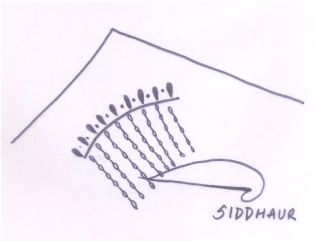
•Bulbul chasma -this is a compound of the siddhaur and makra jaalis.
•Bangle jaali –the holes in this are smaller compared to the madrasi jaali. The holes are assorted in parallel banks with alternate closed areas.
Process of Making a Chikan Garment
In Chikankari a garment is ready after going through several stages, which might take from one to six months, and all done by different persons. There are five stages in the process of making a chikan garment. These are cutting, stitching, printing, embroidery, washing and finishing. The process in detail is as follows –
•Cutting –the first step is of cutting the fabric by the tailor into the required shape or pattern of the garment.
•Stitching -After the fabric is cut, basic stitching is done to give an idea to the block printer of the placement of the designs to be printed.
•Printing -The designs are printed on the semi-stitched garment with blocks and fugitive colors. Block printing is done in the usual way –the cloth to be printed is spread out on the table; the printer dabs the block on the pad tray and places it on the fabric, banging it with his fist. He repeats the process as he moves along the fabric.
•Embroidery –The embroidery is done on the printed designs. Different people specializing in different kinds of stitching contribute to the finished embroidery.
•Washing –This is very important. After the garment goes through the various preceding steps it becomes so dirty that the finer flaws are not seen unless it is washed.
•Finishing -After this the garment goes for final finishing. And thereafter for packaging and finally to the retail shop.
Designs and Motifs
The source of most of the design motifs is Mughal since that is where the craft originated. The styles of motifs whether they are kurtas, saris or angarkhas had a very distinct quality that closely relate to Mughal motifs. Common elements can be seen in places such as the in the ornamentation of the Taj Mahal and Fatehpur Sikri.
The designs in Chikan are named and used according to the stitches employed like murri ka buta, though there are other terms also like haathi (elephant), keri(mango) to signify shapes or motifs predominantly used. Some of the most commonly used designs or motifs are bel (creeper).
This is generally in straight lines, between two invisible parallels and is seen around cuffs and hems of garments as also along the button flaps. Butis of animals or flowers or mahi(fish) are also strong elements in the designs of Chikankari. These forms are used in assortment in simple geometrical grids.
There was also a tradition to embroider verses of the Quran in prayer caps or on angarkha borders.
Use of the Products
Chikan embroidery is used in variety of products from garments, on which it started in the Mughal era, to home furnishings. Garments like long kurtas, sherwanis, kurtis, skirts, saris, handkerchiefs, shirts and now t-shirts are also being embroidered. These have a huge demand in the local market. Home-furnishings include table-cloths, bed linen and cushion covers.
Marketing
Chikan embroidered products have a good market both in India and abroad. Among the main export markets are US, UAE, Japan, Spain, France, Italy and Australia. There is a huge demand for Chikan products in the domestic market also.
Changes in the Craft
Originally Chikan embroidery was done with white thread on white soft cotton fabric like muslin or cambric. Today Chikankari is done not only with colored threads but also on all kinds of fabric like silk, crepe, organdie, terri-cot, chiffon, georgette, and tassar.
Even the products on which Chikankari is done are no longer limited to only garments. Home furnishings are an equally important category. The variety of designs and motifs has also expanded to fit with changing tastes of people.




